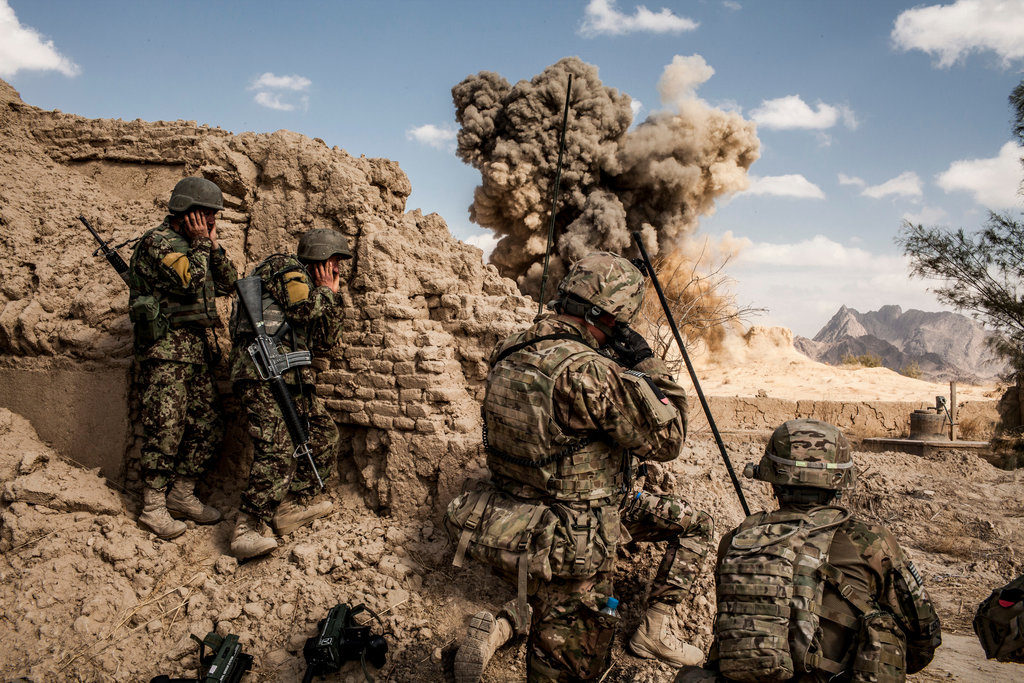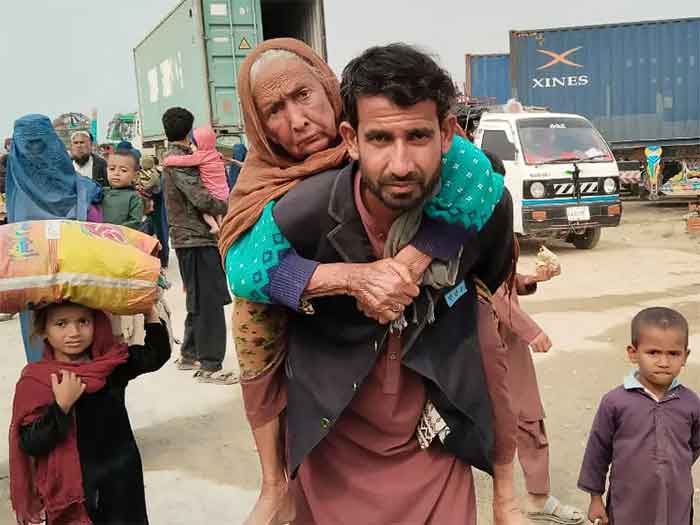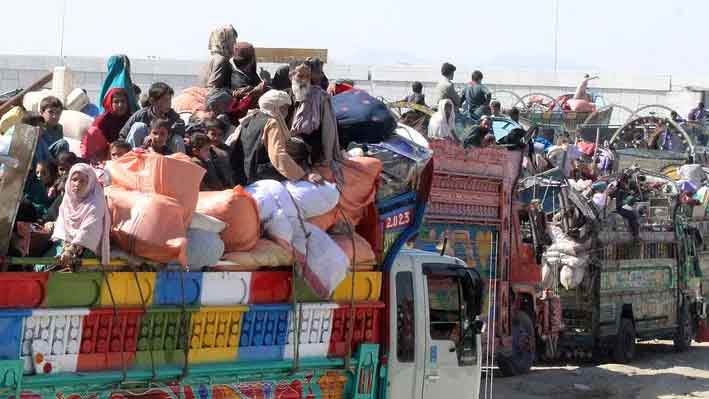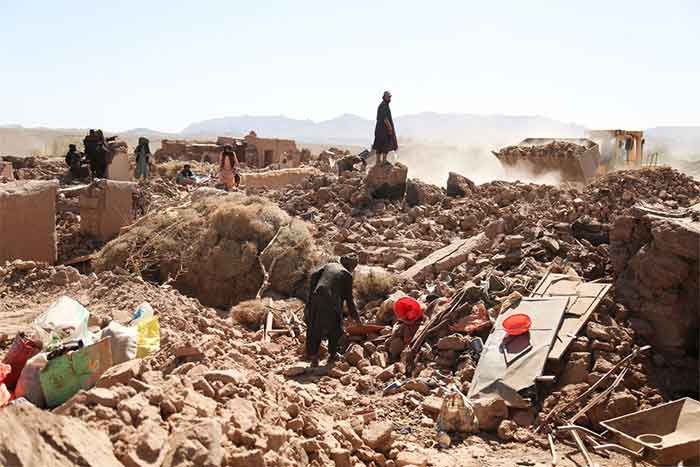
U.S. Defense Department officials are reportedly planning to brief President Donald Trump on several options to withdraw all U.S. troops from Afghanistan, that include an option to pull them out before the 2020 U.S. presidential election in November.
Trump has expressed a desire to end the U.S.’s wars throughout the course of his presidency. In 2019, he abruptly ordered the withdrawal of U.S. forces from northern Syria, much to the surprise and chagrin of officials and allies who advocated for a continued U.S. presence in the region to ensure ISIS did not regroup again.
Senior U.S. officials familiar with the plans said multiple options with varying timelines will soon be presented to the president.
Other plans included leaving 5,000 or 1,500 US troops in the country.
The U.S. officials added that they were leaning towards advising Trump against reducing the U.S.’s footprint too soon.
The prospect of pulling U.S. forces by November would mark a shift from the vague peace agreement between representatives of a fraction of the Taliban’s many factions and the U.S.
The U.S. previously committed to pulling out 3,400 troops by July, and all of them by May 2021, if certain conditions were met. The U.S.’s withdrawal is contingent on the Taliban’s clear separation from terrorist groups including the Islamic State and al-Qaeda; continued talks with the Afghan government, and an overall reduction of violence.
Since the signing of the agreement in February, civilian casualties in the country have increased, and the spirit of the agreement has been marred by tensions between the Taliban and Afghan government, which was not a party to the deal.
Speaking to media at the Rose Garden on Tuesday, Trump addressed concerns about another withdrawal. “We’re there 19 years … yeah, I think that’s enough,” Trump said of the U.S.’s war in Afghanistan. “We can always go back if we want to.”
Trump added that he did not have a specific date in mind for a potential U.S. withdrawal, and claimed he wanted it “over a period of time but as soon as reasonable.”
A report – Trump Wants Troops in Afghanistan Home by Election Day. The Pentagon Is Drawing Up Plans. – by The New York Times said:
President Trump has repeatedly voiced a desire to leave Afghanistan sooner than the timeline laid out in the Feb. 29 peace agreement. He may want to campaign on bringing home every soldier.
The Washington, May 26, 2020 datelined report said:
Senior military officials are set to brief President Trump in the coming days on options for pulling all American troops out of Afghanistan, with one possible timeline for withdrawing forces before the presidential election, according to officials with knowledge of the plans.
The proposal for a complete withdrawal by November reflects an understanding among military commanders that such a timeline may be Mr. Trump’s preferred option because it may help bolster his campaign.
But they plan to propose, and to advocate, a slower withdrawal schedule, officials said.
The move is part of the Pentagon’s attempt to avoid another situation like the one in December 2018 and again in October 2019, when Mr. Trump surprised military officials by ordering the complete withdrawal of U.S. troops from Syria. Diplomatic chaos and violence followed, and the president subsequently modified each announcement. American troops remain in Syria, although in smaller numbers.
The report by Thomas Gibbons-Neff and Julian E. Barnes said:
Senior military officials believe a quick withdrawal from Afghanistan would effectively doom the peace deal reached this year with the Taliban.
In recent months, Mr. Trump has repeatedly voiced a desire to leave Afghanistan sooner than the timeline laid out in the Feb. 29 peace agreement with the Taliban, which stipulated U.S. troops would leave in 12 to 14 months if the insurgent group met certain conditions.
The Pentagon is expected to try to persuade a commander in chief who has made clear his desire to end America’s involvement in what he has criticized as “endless wars” — and who has regularly surprised the military with his decisions.
The debate also highlights the mounting difficulty facing the February agreement. Political strife, the novel coronavirus and bloody Taliban attacks have almost derailed what little progress has been made since the deal’s signing.
The report is article is based on conversations with five officials familiar with the debate over the troop withdrawal. The officials spoke on the condition of anonymity because the deliberations were intended to be private.
The report said:
The Pentagon is set to lay out multiple options in the meeting with Mr. Trump.
One would give Mr. Trump the option of pulling all forces from the country before Election Day. But the Pentagon has other options that would withdraw forces more slowly, with one plan sticking close to the current timeline that would keep American forces in the country until May 2021.
Senior officials believe the president may be able to be persuaded that protecting the peace agreement, which his administration sponsored and supports, will require a slower drawdown of forces, to give the Taliban an incentive to reduce attacks.
Defense Department officials are also arguing to the White House that they cannot yet guarantee that Afghanistan will not again become a haven for attacks against the United States. Arguably the only clear-cut condition of the February deal, outlined in one of the secret annexes, is that the Taliban must publicly renounce the Islamic State and Al Qaeda before the full troop withdrawal begins.
There are currently fewer than 12,000 troops in Afghanistan. The U.S.-led mission in the country is in the process of drawing down to 8,600 troops as part of the February agreement. This smaller American contingent will rely heavily on Special Operations forces and joint United States-Afghan cells, known as “regional targeting teams,” that are focused on counterterrorism missions across the country.
The report added:
“Any reduction under 8,600 U.S. troops will be conditions-based after the U.S. government assesses the security environment and the Taliban’s compliance with the agreement, and in coordination with our NATO allies and partners,” Lt. Col. Thomas Campbell, a Pentagon spokesman, said in a statement.
It said:
Another factor that has contributed to Mr. Trump’s desire for an early withdrawal is the coronavirus and its unchecked spread throughout Afghanistan after it crossed over the country’s western border from Iran.
The Pentagon believes that at least 50 percent of Afghan security forces most likely have the virus, meaning that any training and joint operations between United States and Afghan forces have been paused, halting a key pillar of the American war effort, especially against Islamic State enclaves in the country’s east. But airstrikes against the group still continue.
As part of the peace agreement, the U.S. military is shutting several bases. But the spread of the coronavirus has also accelerated the closing of smaller Special Operations outposts used by the elite units while operating alongside their Afghan counterparts.
The report said:
In a statement on Saturday, the Taliban declared a temporary cease-fire for the three days of the Islamic festival Eid al-Fitr, which started on Sunday and marks the end of Ramadan, the holy month of daytime fasting.
The Afghan government followed, declaring a cessation of fighting even though officials had recently declared that they were restarting offensive operations after waves of Taliban attacks had killed hundreds of security forces after the February agreement. Sunday’s cease-fire is the second of the entire war. The first, widely praised on all sides and in the international community, was in 2018, also during Eid.
“This development offers the opportunity to accelerate the peace process,” Zalmay Khalilzad, the United States envoy for Afghan peace, said in a statement. “Other positive steps should immediately follow: the release of remaining prisoners as specified in the U.S.-Taliban agreement by both sides, no returning to high levels of violence, and an agreement on a new date for the start of intra-Afghan negotiations.”
The exchange of 6,000 prisoners was one of the first sticking points after the United States-Taliban deal, as it all but forced the Kabul government to release Taliban prisoners even though it was not a signatory of the agreement.
Top American officials, including Secretary of State Mike Pompeo, have pressured President Ashraf Ghani of Afghanistan to release the prisoners in the hopes that it would pave the way for the Afghan government to negotiate with the Taliban. Mr. Ghani has ordered their release in a series of groups, as has the Taliban, but after the announced cease-fire, Mr. Ghani pledged to release up to 2,000 more in an attempt to use the three-day cease-fire as a reset for a peace deal that was on the verge of falling apart.
On Tuesday, the Afghan government released 900 Taliban prisoners, the largest in one day since the slow process of prisoner release started and in what Afghan officials described a “good will” move in the hopes the cease-fire could be extended before direct negotiations.
Referring to the Obama administration, the report said:
During the closing days of the Obama administration, the Pentagon was also pressing the White House to slow its planned drawdown.
President Barack Obama had been intent on ending the long war in Afghanistan, but the military thought it precipitous. Commanders argued that removing troops would threaten what little progress had been made after years of prolonged fighting, but officials also acknowledged the pause would give a new president time to reassess options. In October 2015, Mr. Obama halted his drawdown. Mr. Trump and America’s NATO allies ultimately added forces after the Taliban had retaken broad parts of the country.
The current plan of keeping forces in Afghanistan until May 2021 would allow Mr. Trump, if he is re-elected, to re-evaluate his decision to remove troops based on the level of Taliban violence and how well the peace agreement is working. Some American officials also say the political pressure to remove the troops could be different in a second term.
And if Mr. Trump is defeated, a new president may want to reassess whether a continued American troop presence is necessary.
The report cited Lisa Maddox, a former C.I.A. analyst: Cutting short the deployment by only a few months might not seem like a lot, but the current situation in Afghanistan was fragile.
“It sends a message to our Afghan partners that we are running away,” she said. “Extra time allows for better turnover, which is a complicated process given the U.S. government’s involvement in supporting the country’s security and governance.”
A report by The Wall Street Journal also said on May 26, 2020:
The Pentagon is preparing plans for President Trump to draw down forces from Afghanistan by as soon as this autumn, defense officials said, in keeping with Mr. Trump’s call on Tuesday for an American withdrawal.
The Pentagon’s plans include a series of options that range from a complete withdrawal to a partial pullout, officials said. One option would leave approximately 5,000 troops in Afghanistan, and another plan under consideration would leave about 1,500 troops there, according to several officials.
Lindsey Graham’s caution
Republican Sen. Lindsey Graham of South Carolina, an ardent supporter of the Trump administration, cautioned that an abrupt withdrawal would be “horrendous for our national security interests, especially concerning threats to the homeland.”
According to a Wall Street Journal opinion column, Graham said in a letter to Defense Secretary Mark Esper and Secretary of State Mike Pompeo, “I cannot envision any agreement that does not allow for a residual counter-terrorism force combined with a robust intelligence gathering capability sufficient to protect our vital national security interests in the region as well as protecting the American homeland,”
SIGN UP FOR COUNTERCURRENTS DAILY NEWS LETTER
















































